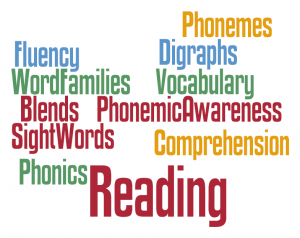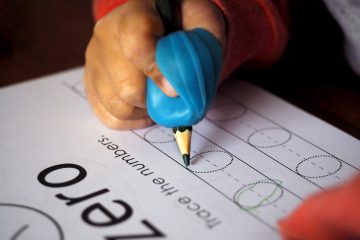 Are you the parent of an emergent reader? If so, you have probably heard your child’s teacher using several different terms associated with reading. Don’t despair if you don’t understand what is meant by these different words, because Red Apple Reading has come to your rescue! The following list of commonly used reading terms and their definitions will help you navigate through your child’s reading journey!
Are you the parent of an emergent reader? If so, you have probably heard your child’s teacher using several different terms associated with reading. Don’t despair if you don’t understand what is meant by these different words, because Red Apple Reading has come to your rescue! The following list of commonly used reading terms and their definitions will help you navigate through your child’s reading journey!
Blends – The term blends refers to letters that stand together but when spoken (or blended), each individual letter sound is heard. Sn, pr, fl, str, and cr are examples of typical blends.
Diagraphs – Diagraphs contain two or more letters that when put together make a single sound. th, ch, sh, and wh are all examples of consonant diagraphs. Ai, ow, ee, er, and ue are examples of vowel diagraphs.
Fluency – Reading fluency involves reading at an acceptable rate (not too fast or slow), reading with expression (not like a robot), reading with accuracy (getting the words correct) and following the text’s punctuation.
Phonemic Awareness – Phonemic Awareness is the ability to distinguish and manipulate sounds (phonemes) in words. Phonemic awareness is a very important precursor to being able to read. Visit Classroom Freebies for a downloadable handout about phonemic awareness.
Phonics – Phonics describes the connection between letters and their sounds. In order for your little one to learn to read, she must learn the different sounds of the letters in the alphabet and how the combination of these sounds form words. If you want to learn more about phonics and why they are important, read this helpful article from PBS.
Reading Level – Reading levels are guidelines that help students choose books appropriate to their level of reading difficulty. For instance my children’s school system uses a grade level equivalent. If my third grader is reading at a third grade level he would be matched with books on a 3.1 level. Each grade has a .1-.9 range. There are several different reading level systems. Ask your child’s school which system they employ. Scholastic Reading provides a guided reading leveling chart that parents will find helpful.
Sight Words – Sight words are words that appear frequently throughout texts. Children need to be able to recognize these words quickly upon “sight” and not have to sound them out. Some examples of common sight words include, like, of, my, go, and where.
Word Families – Perhaps the easiest way to describe the term, word families, is they are words that rhyme. For example, pat, rat, sat, bat, and cat are all members of the at word family. Run, bun, sun, and fun are all part of the un family.
The next time your kiddo brings home a classroom newsletter that contains phrases such as sight word savvy, practicing fluency, and current reading level, be ready with your Ultimate Cheat Sheet of Reading Terms!


